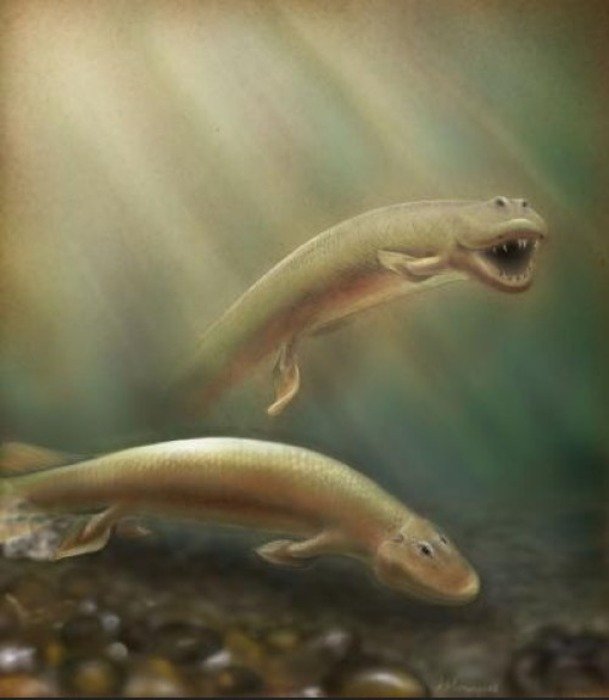An illustration of Tiktaalik roseae in its natural environment. Credit: University of Chicago, Neil Shubin
CHICAGO, Jan. 14 (UPI) -- A fossil of a 375-million-year-old transitional species between fish and the first legged animals shows hind legs began as fins, U.S. researchers say.
The discovery of a well-preserved pelvis and a partial pelvic fin from Tiktaalik roseae challenges existing theory that large, mobile hind appendages were developed only after vertebrates transitioned to land, researchers at the University of Chicago said Tuesday.
Tiktaalik roseae --a lobe-finned fish with a broad flat head and sharp teeth -- represents the best-known transitional species between fish and land-dwelling tetrapods, they said.
"Previous theories, based on the best available data, propose that a shift occurred from 'front-wheel drive' locomotion in fish to more of a 'four-wheel drive' in tetrapods," anatomy Professor Neil Shubin said. "But it looks like this shift actually began to happen in fish, not in limbed animals."
Growing as long as 9 feet as it hunted in shallow freshwater environments, T. roseae had gills, scales and fins, but also had tetrapod-like features such as a flexible neck, robust ribcage and primitive lungs, the researchers said.
It also had a pelvis comparable to those of some early tetrapods, they said.
"This is an amazing pelvis, particularly the hip socket, which is very different from anything that we knew of in the lineage leading up to limbed vertebrates," study co-author Edward Daeschler of Drexel University said.
"They appear to have used the fin in a way that's more suggestive of the way a limb gets used," he said.















